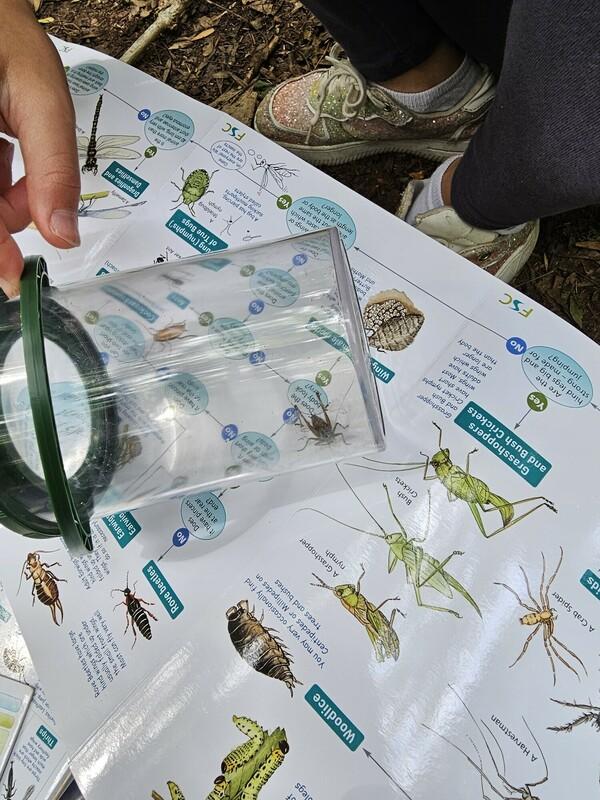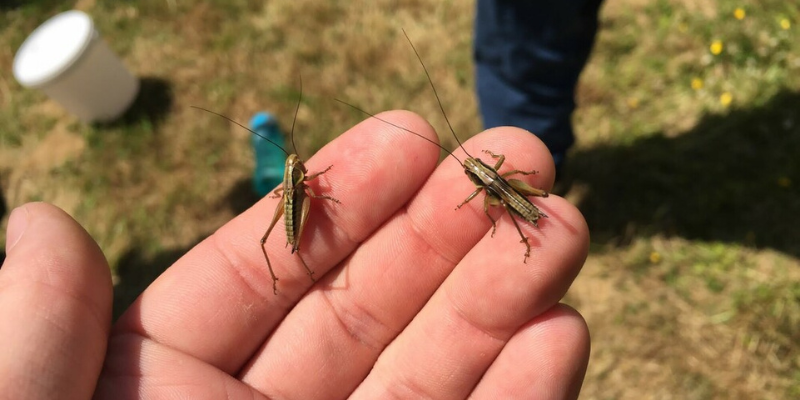
Survey season: Filling in data gaps nationally, regionally, and locally
A variety of habitats ensures a multitude of ecosystems that allow for plants, animals, and fungi species to thrive. The Forest includes large areas of newly planted broadleaf woodland, but also significant areas of mature and ancient woodland, grassland, heathland, farmland, and wetlands, all of which provide niches for an array of biodiversity which we monitor with the help of volunteers.
The importance of regular data collection in the Forest
Carrying out surveys for plants and animals is essential for us to learn what we have in the Forest and help to species thrive. Last year, our staff and volunteers recorded just over 800 species in the Forest. They are a fantastic method of collecting data, helping us identify what we have in different areas of the Forest. With ongoing monitoring we get valuable insights into species, their behaviours, and how their populations may change. This then informs the management of the habitats in the Forest.
Surveying our landscape long-term is a vital part of habitat conservation work. This collected and collated information gives us an idea of how our landscape is changing over time. As the Forest matures, we want to ensure that common species continue to flourish and key species locally are conserved.

Spring, the season for surveys
Although we survey all year round, spring is renowned for being survey season here in the Forest. Volunteers start our butterfly and bumblebee surveys which continue through until autumn. Surveys with a focus on grasslands where earlier spring flowers appear are important to monitor, as the information collected gives us a greater understanding of the changing climate and how surges of extreme weather have a ripple effect on other species, such as invertebrates. As well as this, our staff also begin to do reptile surveys and eDNA testing for great crested newts in ponds.
What is the local, regional, and national importance of the work we do?
Locally, our records help us to know what species are present and how they are faring, particularly in biodiverse areas in the Forest, and to inform our management. Regionally, they help to put into context the importance of the Forest for local biodiversity. For example, grasshopper warblers (a bird of conservation concern) are known to have particularly good populations around the Spernal area of the Forest.
Wider than this, they feed into national databases and help inform organisations like the British Trust for Ornithology (BTO), Butterfly Conservation, and the British Dragonfly Society, about how species are faring on a national scale, which then informs larger pieces of work such as the State of Nature reports.

Why we need volunteers and what is required
Although staff complete many different types of surveys, volunteers are essential in helping to survey and monitor the wildlife across many areas of the Heart of England Forest, simply because of the scale and array of habitats that are ever-growing.
What do you need to be a survey volunteer? The main requirements are reliability and enthusiasm! The knowledge, skills, and techniques can be taught, and we offer excellent, free comprehensive training for butterfly, dragonfly, and bumblebee surveys. There is also training provided for specialist surveys, such as for purple emperor or white admiral butterflies.
Surveys can vary from a weekly commitment from April to September doing a butterfly transect, to just 20 minutes a month looking for dragonflies, so there is a survey that will suit even the most pressed for time individual.

Give your time to help the Forest
Giving your time to carry out seasonal surveys around the Forest is a great opportunity to work outdoors, either on your own or as part of a team, enjoying nature while recording wildlife sightings which help us to improve biodiversity.
Volunteering to survey with us gives you the opportunity to get closer to nature, deepen your understanding of native species and habitat, and experience what it is like working in the conservation sector.



